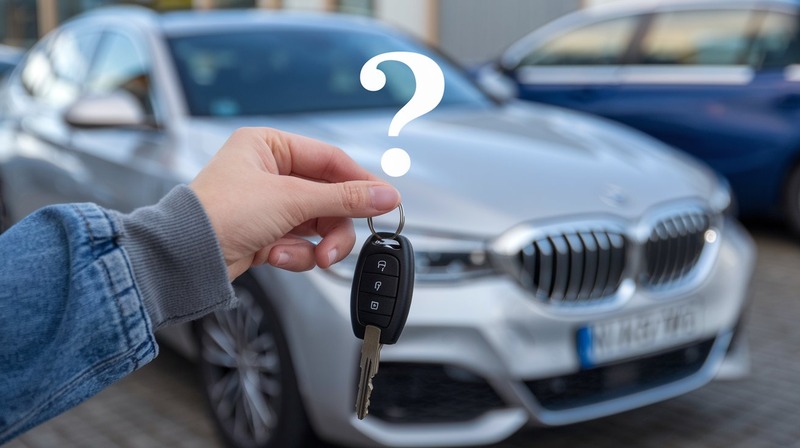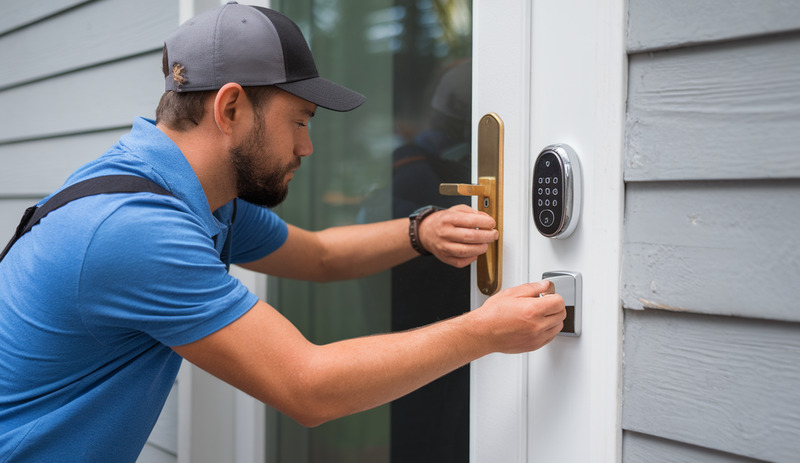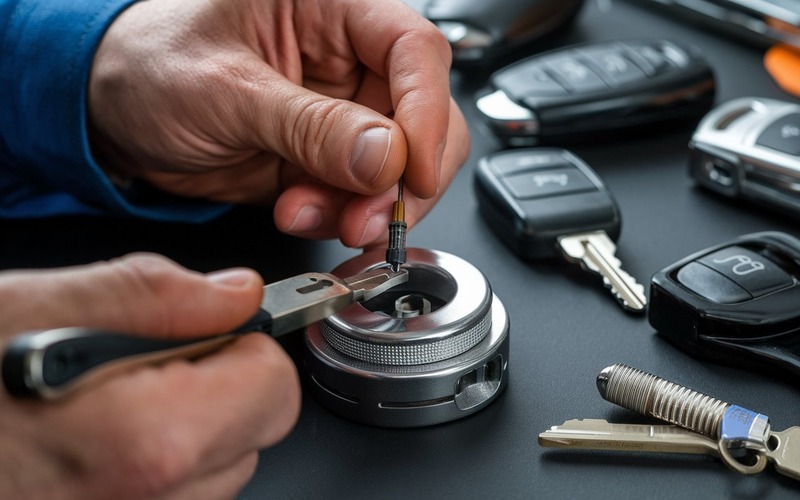
Picture this: You’re running late for an important meeting. Your hands are full of coffee and paperwork, and you click your key fob… nothing happens. No beep, no lights, no unlocking. Your heart sinks as you realize your key fob has officially given up on life. Talk about terrible timing.
Take a deep breath. This isn’t the end of the world, and you’re definitely not alone. Whether your key fob just needs a simple battery swap or has more complicated issues, we’ll walk you through exactly what to do – no technical engineering degree required.
Is It Really the Battery? Quick Diagnostics Anyone Can Do
Let us discuss the problems associated with key fobs. Before rushing to conclusions, there are several easy examinations you can perform to verify that the battery is, in fact, at fault.
First, try your key fob from various distances and angles. If it works right next to your car but fails when you’re further away, that signals a strong likelihood that a battery is the problem. Another quick test is to check the operation of your spare key fob – if it works, that confirms your main key fob’s battery is to blame.
Here’s something that many individuals are not aware of: key fobs can be moody. Occasionally, the issue is not a total battery death, but a dying battery that is just not sending a strong enough signal. If you are sensing that your car is not responding in a timely or consistent manner, it might be time to change the batteries in your key fob.
DIY Key Fob Battery Replacement: It’s Easier Than You Think
It’s simpler than many people think to change a key fob battery. Fobs usually use small, coin-style batteries (CR2032 or CR2025) that are available at most drug stores or electronics shops. Pro tip: Before you dash to the store, check your car’s manual or look up the specific battery type online to make sure you get the right one.
Usually, replacing the battery involves a few simple steps. First, find the small release button or seam on your key fob. Carefully pry it open, using a small flathead screwdriver or a coin if needed. Take out the old battery, and note its orientation—this is important. When you put in the new battery, make sure it goes in the same way as the old one. A slight push and the whole thing snaps back together.
You May Like: Can A Locksmith Open A Locked Mailbox?
When a New Battery Isn’t Enough: Deeper Key Fob Problems
What occurs when a new battery doesn’t remedy your problems? It may be time to probe inward. Signs that internal electronics are failing include totally unresponsive buttons, intermittent function, or a key fob that seems to be physically damaged. Water damage, severe drops, or extreme temperatures can cause internal circuit problems that no battery replacement can fix.
If you are having these problems, your best bet might be to have a professional repair or replace the key fob for you. A typical battery costs about $5-10, but a full key fob replacement done by the dealer can run you $200-400. Some auto shops do offer more affordable alternatives, so it’s worth doing some price comparing. For expert assistance, visit Doctor Lock for professional key fob services.
Backup Plans: What to Do When Your Key Fob Completely Fails
If your key fob ceases to work altogether, don’t panic. Most key fobs have a concealed physical key – usually accessible via a small button or sliding mechanism. This key will allow you to manually unlock your car door in the event of an emergency. If that fails, your modern car probably has a smartphone app or some other alternative method of allowing you entry.
Your vehicle dealer can assist as well. They can reprogram a replacement key fob or offer short-term access alternatives. Some dealerships even provide an emergency service for key fob problems, though this may involve a service charge. If you’re local, check out our location on Google Maps for convenient service.
Prevention: Keeping Your Key Fob Healthy
The best way to handle a problem is to stop it from occurring in the first place. Keep your fob in a safe place, away from the kinds of environmental extremes that can cause it to fail. Don’t leave it near things that might mess with its signal, like electronic devices, and don’t store it in the kinds of temperature or humidity extremes that are bad for electronics (or batteries!).
Extending the life of your key fob takes just a little care, but it goes a long way:
- Keep your fob clean
- Avoid dropping it
Quality key fobs are sophisticated pieces of technology. Treat them that way.
Final Words
Wrap up with an encouraging, relatable paragraph about car key technology being finicky but manageable. Reinforce that most key fob issues are quick, cheap fixes that anyone can handle.



